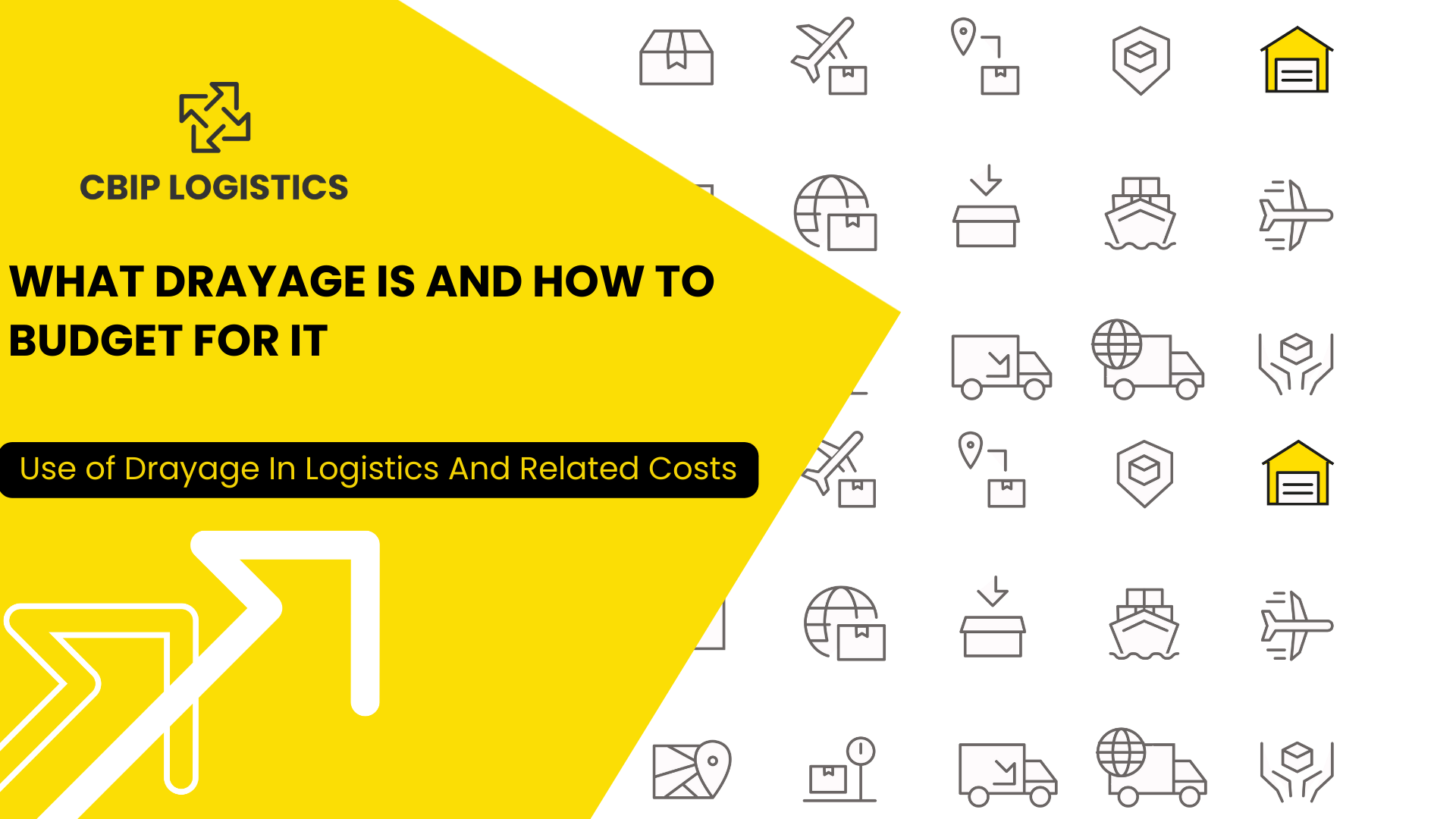What Drayage Is and How to Budget For It

If you have ever had cargo that you needed to ship long-distance, you may have seen the term “Drayage” show up as a line item on your bill. While many businesses need drayage services, many people do not know what exactly drayage is, or how to budget for it.
Drayage refers to the act of hauling goods between ports, rail spurs, warehouses, and any other short distances the goods may need to travel, typically by truck.
At one time or another, your company may need to use drayage services to keep your logistics moving. When that happens, you need to understand how drayage is used and how you can budget for it.
Read About CBIP's Full-Service Adaptable Logistics Solutions
How is drayage used in logistics?
When we’re talking about drayage, we are referring to a specific set of situations. These situations are transporting a container:
- From sea or air port to rail yard or nearby warehouse
- From one warehouse or distribution center to another nearby warehouse or center
The function of drayage is to transport goods small distances, and/or from one mode of transportation to another. It’s a key function in the intermodal shipping process.
You may be wondering why this is a separate service at all; can’t the trucking company that takes care of long-haul just go pick up your goods at the port?
Perhaps they could, but anywhere you are keeping your goods, you will have to pay — ie pay more for a warehouse the longer they are stored there.
With ports in particular, you have to pay a fee if you leave your goods at the port for longer than the free window, which tends to be somewhere around three to seven days.
When you leave a container for longer than this allotted window, you will start incurring a myriad of fees, from port detention fees to equipment demurrage fees. While it varies from port to port, these charges can get expensive the longer you leave your items.
For instance, in Los Angeles, what starts at a few hundred dollars in the first few days quickly turns into a couple thousand dollars as the days go on.
This is why it's imperative you get your goods out and moving as soon as you can, and the drayage truckers are the fastest service for that job.
Related: The 7 Types of 3PL Fulfillment Fees and Their Typical Costs
How to budget for drayage
So, how much does drayage cost?
Drayage costs can run you anywhere from a few hundred to a few thousand USD, all told. The cost will depend on several different factors, such as the length of the haul and the number of other drayage service providers in that area.
There are a few different types of fees you need to consider when it comes to drayage.
-
Flat rate
A flat is typically only charged for short distances or light loads. The flat rate is quoted in advance based on how far your items need to go, regardless of their weight or size.
-
Weight-based rate
Typically, drayage rates are measured by how far your cargo needs to go and how much it weighs in CWTs(hundred-weights). Typical weight-based drayage rates tend to fall between 60 to 160 USD per CWT.
-
LCL and FCL rates
For LCL shipments, you will pay for the volumetric and metric weight of the shipment. For FCL, the cost will depend on the length of the move and any other transportation specifications you’ve made.
Work with a 4PL who can take care of all the details when it comes to freight
Taking care of the details of freight on your own is tough, particularly if you don’t have a dedicated logistics team. That’s why you hire a third party.
However, you also need transparency in your supply chain so you and your customers can understand why things cost what they do. That’s why you work with a 4PL like CBIP Logistics, who can take care of your logistics for you, and give you total logistics transparency.
For the freight management side, we have over ten years of managing freight logistics down to the last detail, and we will step in and assist when the small things go wrong.
As a 4PL, we do not own our own logistics assets. Instead, we work with a vast network of logistics providers who we connect you with. They do all your trucking, shipping, and last-mile fulfillment.
With all these moving parts and partners located around the world, how do we provide you with transparency? Simple; we connect every little part of your logistics operation together on our in-house CMS portal. That way you can check on data, track cargo or parcels, and keep an eye on important business KPIs, all in one portal. Plus, you only get one invoice for everything.
Ready to simplify your logistics this year? Get in contact with us when you want to have a chat about what optimized e-commerce logistics could look like for you.






